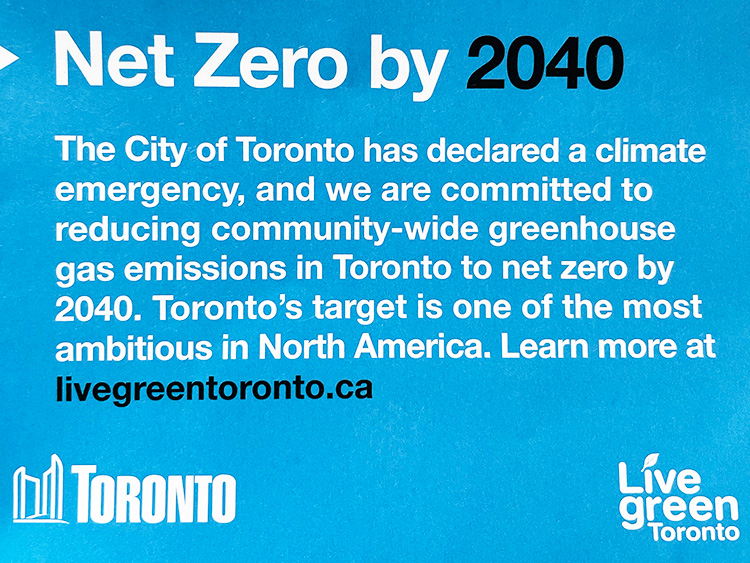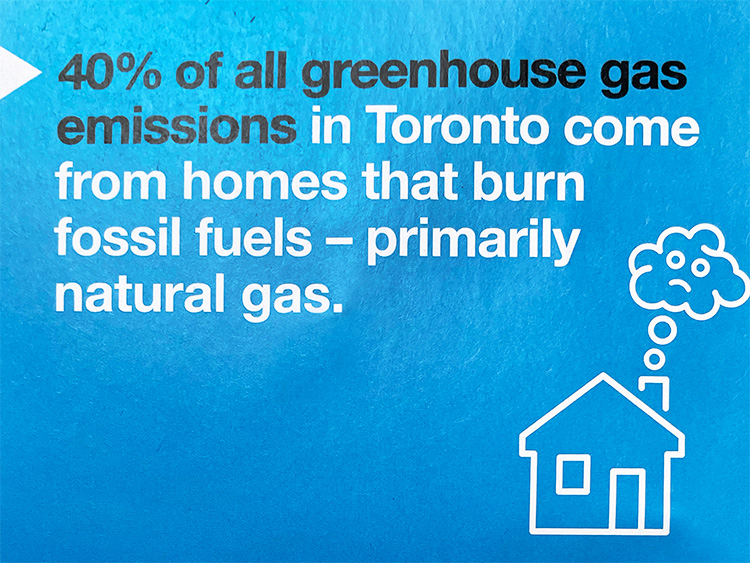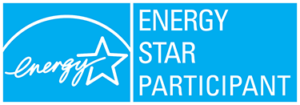City officials announced that Toronto is on track to become net zero by 2040. This means that the city will produce no more emissions than it can absorb, through a combination of energy efficiency measures and renewable energy sources.
Toronto is one of the largest cities in North America to make this commitment, and officials say that they are confident they can achieve their goal.
With a commitment like this, Toronto is leading the way in terms of sustainability and setting an example for other cities to follow. Net zero is an important goal, and Toronto’s commitment to achieving it shows that anything is possible if you put your mind to it.
What is Net Zero, and why should cities be striving for it?
Net zero is a term that is becoming more and more popular in the world of sustainability. But what does it mean?
In the case of cities, the term is used to describe greenhouse gas emissions. Net zero in this context means, the city is not producing a positive balance of GHG emissions. On the one hand, that means emissions have to be reduced drastically; but they can also be offset by carbon capture, planting trees, or any other process that removes GHG from the atmosphere.
There are several reasons why this is an essential goal for cities to strive for. Municipalities are responsible for a large percentage of greenhouse gas emissions, so by becoming net zero, they can significantly reduce their environmental impact.
Cities have chosen different paths to achieve net zero status. Some focus on increasing energy efficiency, while others rely on renewable energy sources like solar and wind power.
Achieving a goal as ambitious as becoming net zero can be difficult, but it is possible with proper planning and execution. Toronto is an excellent example of this – the city has set a clear goal and is working hard to achieve it. With other towns following Toronto’s lead, we can make significant progress in terms of sustainability and climate change.

Toronto’s commitment to becoming net zero by 2040
The City of Toronto has set an ambitious goal to become net zero by 2040. To achieve this goal, the city has developed Transform TO. This strategy outlines several measures the city will take to reduce its greenhouse gas emissions. Buildings are the main emitters of GHG emissions in the city, followed by transportation and waste.
One of the ways Toronto plans to reach net zero status is by increasing the energy efficiency of its buildings. The city has been working on this for some time now and has installed a number of solar panels on city rooftops. In addition, Toronto is looking at ways to use renewable energy sources such as wind and hydro power.
Award for Toronto’s Net Zero strategy
We can also be a little bit proud as city dwellers. The TransformTO Net Zero Strategy has been recognized for its efforts to reduce greenhouse gas emissions in Toronto. The city was recently awarded the Environment, Climate & Energy Award as part of the Awards for Excellence in Sustainability initiative of the American Planning Association.
The award is given to organizations that demonstrate a commitment to sustainability and innovation. The award is a testament to Toronto’s dedication to sustainability and will help motivate the city to continue making progress toward net zero.
How the city plans to achieve this goal
To become Net Zero, Toronto is committed to reducing its greenhouse gas emissions by 80% by 2040. The city has already made significant progress in this area, reducing its emissions by 26% since 1990. To continue on this path, the city has set out a number of strategies that it will be implementing over the next few years. Some of these strategies include:
- Increasing the use of renewable energy sources such as solar and wind power
- Improving energy efficiency in buildings and homes
- Encouraging the use of electric vehicles
- Supporting local food production
To pursue the strategy, the city has launched a variety of initiatives. Let’s pick up a few of them.

Toronto Residents Received Pamphlets in the Mail
The City of Toronto mailed pamphlets to local residents promoting the Net Zero 2040 commitment, and things homeowners can do to help, including:
- Replacing your gas furnace with a heat pump, which is considered by experts as a key technology in the fight against climate change
- Upgrading your windows & doors
- Improving your home’s insulation.
What is the Toronto Green Standard?
The Toronto Green Standard is a set of guidelines for designing and constructing energy-efficient buildings. It was first introduced in 2009 and has been updated twice since then. Version 4 of the standard was released in 2018 and includes new requirements for energy efficiency, renewable energy, and water conservation.
The Toronto Green Standard is based on six principles:
- Energy Efficiency: Buildings should be designed to use as little energy as possible.
- Renewable Energy: Buildings should be equipped with renewable energy systems such as solar panels and wind turbines.
- Water Conservation: Buildings should be designed to use as little water as possible.
- Waste Reduction: Buildings should be designed to generate as little waste as possible.
- Sustainable Materials: Buildings should use materials that are environmentally friendly and sustainable.
- Building Performance: Buildings should be designed to operate efficiently and effectively.
The Toronto Green Standard is voluntary, but designers and builders who meet the requirements are eligible for financial incentives from the city. There are also several benefits to complying with the Toronto Green Standard, including reduced energy costs, reduced greenhouse gas emissions, and improved air quality.
If you are considering designing or building a new home or office building, check out the Toronto Green Standard version 4. The standard contains recommendations that will help you create a more energy-efficient building.
Get Quotes
How soon are you looking to buy?*



The City’s Net Zero Homes and Buildings Strategy
This initiative is for existing, privately-owned homes in Toronto. The city is taking nine key policy actions to help building owners reduce their emissions and reach the goal of net zero emissions by 2040:
1. Requiring building owners to report greenhouse gas (GHG) emissions.
2. Establishing GHG emissions performance targets.
3. Requiring building owners to conduct energy and emissions audits.
4. Providing support for building retrofits.
5. Expanding the enhanced retrofit financing.
6. Streamlining the permitting and approval process for deep retrofits.
7. Building awareness for building owners to undertake emissions reduction measures.
8. Supporting workforce development and training.
9. Partnering with other orders of government to ensure funding.
The main focus lies in using electricity as an energy source and using renewable energy sources. Insulation and energy efficiency of windows and doors are the other points of interest. The initiative offers grants, financing and other incentives for homeowners.
It’s worthwhile to explore available HVAC rebates for instance, if you intend to make improvements to your home.

The benefits of going net zero
Net zero is an important goal because it has a number of benefits for both the environment and the community. At the core of the idea is the reduction of greenhouse gas emissions responsible for climate change. When cities become net zero, they can reduce the amount of emissions they produce, which in turn helps to improve the environment and fight climate change.
In addition, net zero can help improve air quality. When cities use renewable energy sources like solar and wind power, they can reduce the amount of air pollution, which is known to affect human health negatively.
Finally, net zero can help build stronger communities. When cities work together to achieve a common goal like net zero, it brings people together and helps to strengthen relationships. This can lead to better communication and a stronger sense of community.
What benefits will consumers see?
The benefits of net zero go beyond just the environment and the community. Consumers can also benefit from going net zero. One of the main benefits is the reduction of energy costs. Increasing energy efficiency means using less energy, leading to lower utility bills.
In addition, many cities are investing in renewable energy sources like solar and wind power. This helps keep energy costs down and makes net zero more affordable for consumers. By working together to achieve a common goal like net zero, consumers can save money and help improve the environment at the same time.
Which steps should I take?
As a homeowner in Toronto, you can play a role in helping the city reach its net zero goal by installing solar panels, using energy-efficient appliances and lighting, and using smart thermostats.
Net zero homes and buildings reduce greenhouse gas emissions and save homeowners and tenants money on energy costs. In addition, net zero buildings are more comfortable and efficient to live or work in.
If you are thinking about retrofitting your home or building, resources are available to help you get started. The City of Toronto website is dedicated to helping homeowners and businesses make the switch to net zero.
The role of furnaces and air conditioners
In a net zero world, furnaces and air conditioners play a pivotal role in reducing greenhouse gas emissions. Furnaces are used to heat homes and businesses, and air conditioners are used to cool them. Both of these devices use a considerable amount of energy, resulting in greenhouse gas emissions.
To reduce greenhouse gas emissions, furnaces and air conditioners must be energy efficient. This means they should use as little power as possible to produce the desired output. In addition, they must be appropriately maintained to ensure that they are working as efficiently as possible.
By using energy-efficient furnaces and air conditioners, we can reduce the amount of greenhouse gas emissions. This is crucial in creating a more sustainable future for our planet and getting to net zero.
Heat pumps as one of the solutions for net zero
But you can do even better. Buying a ducted heat pump offers significant benefits for both the environment and consumers. They are more efficient than traditional heating methods. In addition, they can run on electricity, removing the need for using natural gas, which further reduces your home’s carbon footprint. They also work well in cold climates, making them ideal for homes and businesses in those areas.
And they can be installed to use your home’s existing ductwork. For homes without ductwork, like those heated with a boiler, ductless mini-split heat pumps are an option to consider.
In addition to these benefits, heat pumps have some other advantages. For example, they are quiet and produce little noise. They also work well with programmable thermostats, which can help you reduce your overall energy consumption. Finally, they are relatively affordable to install and operate, making them a cost-effective choice for many people.
How we can work together to create a more sustainable future
Sustainability is one of the most critical issues facing our world today. We need to work together as a community to create a more sustainable future. Every individual has a role to play in creating a more sustainable future, and we can achieve great things by working together.
Net zero can be seen as an opportunity for cities to build stronger relationships and a more resilient infrastructure and impact climate change simultaneously. Using renewable energy sources, like solar and wind power, can make a massive impact on the resiliency of cities.
As the world’s population continues to grow, it is more important than ever that we work together to create a more sustainable future. Toronto’s commitment to becoming a net zero city is an essential step in the right direction, and other cities should follow their lead.
By working together to achieve common goals like reducing greenhouse gas emissions, we can positively impact the environment and improve the quality of life for all people.
If you’re considering implementing home upgrades to lower your energy consumption, consult a Certified local HVAC contractor for your heating & air conditioning needs.




